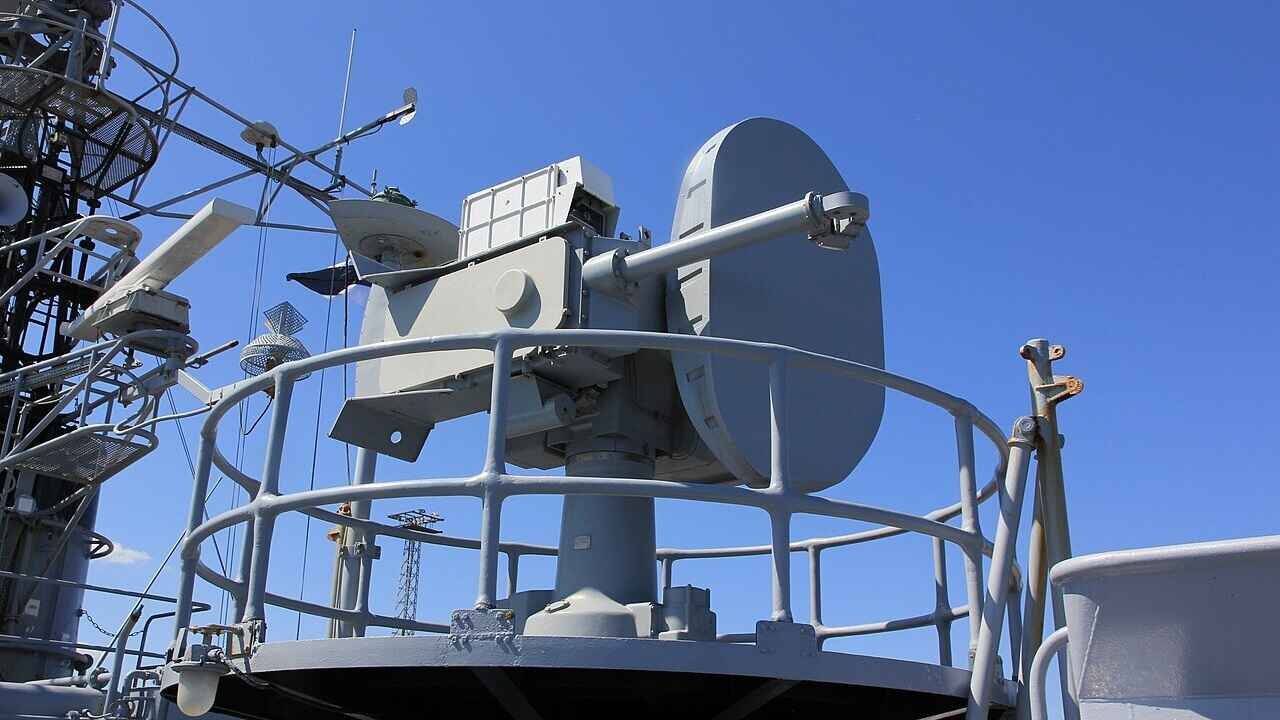But the carriers are still overwhelmingly vulnerable to mass Chinese missile attacks.
An interesting image was spread on the internet last weekend. It depicted a new piece of equipment being loaded aboard the American nuclear-powered aircraft carrier, the USS George Washington. Enterprising internet sleuths at Naval News identified the system being loaded aboard as an MK24 MOD0 radar.
The picture, by the way, was taken at some point in October 2024 while the George Washington was docked in Japan.
An MK24 MOD0 radar system is specifically tailored to “detect threats at greater distances, or to identify low-flying missiles,” such as “sea-skimming” missiles of the kind that populate China’s anti-access/area-denial (A2/AD) arsenal.
Of note, the MK24 MOD0 radar systems are only installed aboard American warships that are operating in the Indo-Pacific area of responsibility (AOR).
Thus, the United States Navy is tailoring their forces operating in this increasingly contested domain to better withstand the withering attacks from China’s A2/AD systems that they will undoubtedly be subjected to, when—and if—China decides to take military action against Taiwan. For China to have any chance at successfully conquering Taiwan, their forces must keep U.S. military assets away long enough for the Chinese People’s Liberation Army (PLA) to take control of Taiwan.
A2/AD is the linchpin of China’s grand strategy of denying American forces access to the contested domains of places like the Taiwan Strait or the South China Sea. What’s more, with the A2/AD networks that China has built throughout the region, they could target assets as far away as Okinawa and even Guam. (China possesses a missile system they’ve informally dubbed the “Guam Killer.”)
But America’s aircraft carriers are key. They are the consistent source of U.S. military power projection into what will undoubtedly be an Indo-Pacific that is well-defended by China. By tailoring their defenses to detect and deflect things like sea-skimming missiles, the aircraft carriers might have a chance to get within range of any conflict area in the Indo-Pacific and deploy their warplanes.
The MK24 MOD0 is tied to the carrier’s Close-In Weapon System (CIWS) and Rolling Airframe Missiles (RAM) that protects the carrier, specifically its vital flight deck, from incoming attacks. And the sooner that the carrier can detect incoming threats of the kind that China will deploy against the American carriers, the better the chance at survival they will have.
A Grave Strategic Error
American leaders are making a massive mistake. Yes, they are correct that the carriers need far greater situational awareness to operate in the Indo-Pacific than they previously had. But what good is detecting incoming swarms of sea-skipping missiles if there are still too many of them for the onboard defensive systems to handle? Or, what good is such a detection method if the Chinese will simply deploy hypersonic weapons against which there are no active defenses?
US carriers are wildly expensive machines. The risk to them from Chinese A2/AD outmatches any defense that can be crafted (other than keeping these ships out of the range of such Chinese systems).
Fundamentally, aircraft carriers are the wave of the past. In terms of manned systems, submarines are the crucial platform for the U.S. Navy’s power projection in a contested space. Even these systems, though, are both vulnerable to detection—and nowhere near numerous enough to be worthwhile. Unmanned undersea vehicles and unmanned surface vessels are another important power projection platform. If they’re lost to A2/AD, they’re nowhere near as expensive as carriers are and, with no sailors or marines aboard, there’s no loss of life.
An even better solution for overcoming the A2/AD threat to U.S. warships are hypersonic weapons. This is the domain that America should be focused on. As it stands, both Russia and China already have far greater hypersonic weapons capabilities than the U.S. does—and China is even developing real defenses against incoming hypersonic weapon attacks. If the United States is to have a chance at overcoming the A2/AD threat, then, it needs to rapidly develop and deploy hypersonic weapons.
America Must Do Better—and Go Faster
Firms, such as Lockheed Martin, are already working on hypersonic cruise missiles. The U.S. Army, too, has their Dark Eagle project. At the same time, the U.S. Air Force has tested their own hypersonic systems. These are all right moves. Yet, they are wholly insufficient in terms of size, commitment level, and speed. What’s needed is scale. Build a large and reliable arsenal of hypersonic weapons and watch the A2/AD threat vanish.
Only after American hypersonic weapons are used to obliterate China’s impressive A2/AD from over-the-horizon can American war planners even think about sending carriers into the fray. Stop nibbling on the edges with things like new radars that can detect sea-skipping missiles.
Pentagon planners must think bigger (and more practically) than they have.
About the Author: Brandon J. Weichert
Brandon J. Weichert, a Senior National Security Editor at The National Interest as well as a Senior Fellow at the Center for the National Interest, and a contributor at Popular Mechanics, consults regularly with various government institutions and private organizations on geopolitical issues. Weichert’s writings have appeared in multiple publications, including the Washington Times, National Review, The American Spectator, MSN, the Asia Times, and countless others. His books include Winning Space: How America Remains a Superpower, Biohacked: China’s Race to Control Life, and The Shadow War: Iran’s Quest for Supremacy. His newest book, A Disaster of Our Own Making: How the West Lost Ukraine is available for purchase wherever books are sold. He can be followed via Twitter @WeTheBrandon.
Image: Wikimedia Commons.
